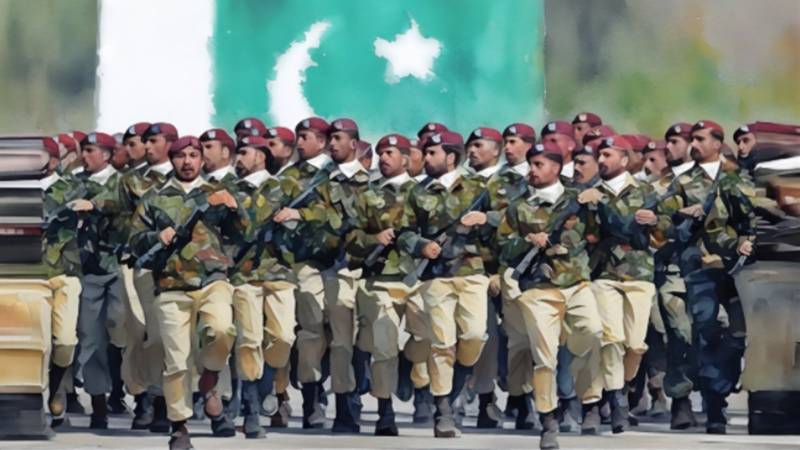
Anocracy: Open and Closed
Global politics seems to be becoming conducive for military takeovers again. The age of democratic revolutions is well and truly over. The fact is: it began to erode within a decade after ‘new democracies’ started to emerge at the end of the Cold War in 1991. In 1992, the influential American scholar Francis Fukuyama wrote that liberal democracy would be free of any serious opposition after the collapse of Soviet communism.
Fukuyama predicted an era in which liberal democracy would sweep aside all manner of authoritarianism and become the globally preferred system, guided by established democracies in the West. But not long after this prediction, the vacuum created by the collapse of the Soviet Union was filled by new forms of authoritarian politics. These included Islamism and a creeping populism. The latter emerged in established democracies which were supposed to guide the rest of the world towards building democratic societies.
Various former communist dictatorships did begin to transform. The same was the case in regions that were once dominated by non-communist dictatorships as well. The 1990s were, thus, a period of euphoria for political scientists and activists who had for long advocated the globalisation of democracy. The new-found democracies were called ‘transitional democracies.’ They were expected to evolve into becoming full democracies.
But by the early 2000s, some political scientists began to warn that the political structures in most countries that had begun to be seen as transitional democracies were unwilling to fully dislodge their former authoritarian tendencies. Instead, most had adopted a facade of democracy to shape a more diluted form of authoritarianism. Authoritarian centres of power did slightly retreat from the foreground, but they were now using electoral politics to engineer ‘democratic’ vessels for themselves, through which they looked to safeguard their dominance. The result was hybrid regimes or systems that were neither fully democratic nor fully autocratic. Citizens enjoyed some benefits of democratic rule, but many fundamental rights remained elusive.
Hybrid regimes often emerge in what are referred to as ‘anocracies.’ The term ‘anocracy’ first appeared in the 1950s. But its usage increased manifold after the end of the Cold War, more so from the early 2000s, when many transitional democracies failed to transform into becoming full democracies. Anocracies are quasi-democracies which can move forward and become full democracies, or they may collapse back into becoming autocracies. They can also get stuck in an uncertain and vulnerable limbo. Data suggests that between the 1990s and 2010s, only a handful of transitional democracies succeeded in becoming full democracies.
Anocracies neither have the muscle of authoritarian rule, nor the empowered institutions of established democracies. In an anocracy, authoritarian tendencies are active in the background. They use engineered ‘democrats’ to maintain their influence. The engineered democrats function through weak democratic institutions and are easily dispensable. This often triggers polarisation and civil strife, because democratic institutions are too weak to resolve issues and tensions between various centres of power and segments of society through consensus-building processes.
A ‘closed anocracy’ is dominated by authoritarian forces who only allow a select group from the polity to take part as candidates in the electoral process. In ‘open’ anocracies, certain dominant non-electoral forces remain influential, but a larger number of candidates from the polity can compete in an election. But this does not mean that an open anocracy is any less problematic than a closed one.
Anocracy is often viewed by political scientists as a minacious condition, in which a country often becomes exposed to serious political fissures. In open anocracies, civil strife often makes the system collapse back to becoming a closed one. This can then lead to the system returning to becoming fully authoritarian. Examples of this include the 1977 PNA movement against the ZA Bhutto regime in Pakistan, and the aftermath of the ‘Arab Spring’ uprisings, especially in Egypt. The same may happen in Bangladesh after Sheikh Hasina’s recent dismissal due to riots and protests against her government. During the Hasina era, Bangladesh had mutated from being an open anocracy to becoming a closed one. This is why civil strife there has attracted the attention of the military which is likely to impose an unelected set-up to stabilise the country.
Closed anocracies do not entertain many democratic pretensions. Factors that may lead to civil strife are ruthlessly crushed. This requires the squashing of multiple fundamental rights. The civil society that has some space to protest in an open anocracy, is systematically browbeaten and pushed back. And even if the strife prevails, it either triggers military intervention or further tightens the boundaries of closed anocracies. This is what many are expecting to happen in Bangladesh.
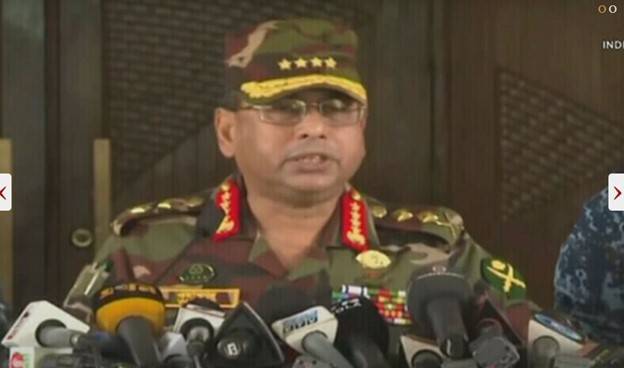
One saw this taking place recently in Pakistan as well, when an alleged attempt by the party of the populist former prime minister Imran Khan failed to trigger a mutiny in the military against the current army chief. The riotous actions in May last year by Khan’s party pushed the country from being an open anocracy to increasingly becoming a closed one.
In an anocracy, authoritarian tendencies are active in the background. They use engineered ‘democrats’ to maintain their influence
But why are military takeovers becoming common again? There were 20 successful military coups between 2010 and 2024. Most of them took place in Africa. Recently, the military’s intervention in Bangladesh too can be considered a coup of sorts, even though the military is likely to install a ‘technocratic’ set-up as it did from 2006 till 2007. Chances of a military coup increase when open anocracies become closed anocracies — now more so because Western democracies themselves have been facing a ‘crisis of democracy’ (due to the electoral rise of far-right populists). This has degraded their influence and position to undermine military coups in transitional democracies/anocracies. There is every likelihood that to challenge China’s growing economic influence, Western democracies will eventually restore relations with any future military regimes, despite first condemning them. This was common during the Cold War as a way to stay in the race of influence against the Soviet Union.
The ‘Fog of Coup’
With the tussle between the military-establishment (ME) and the judiciary intensifying in Pakistan, the frequency of the words ‘military coup’ has dramatically increased in TV talk shows, and in vlogs. Yet, the consensus seems to be that in this day and age, pulling off a military coup is next to impossible. The international community, especially the US and Europe, is unlikely to recognise a military regime. Secondly, will the military agree to grab direct power in a country reeling from high inflation and severe political polarisation?
Most analysts don’t think so. Yet, as mentioned, reaction from Western democracies towards a military coup may not be as intense, or at least not as effective as it could have been a decade ago. Then, there are also those who are now of the view that the manner in which the aims of the ME in Pakistan are being frustrated by the judiciary, the possibility of a military coup cannot be completely ruled out. The ME, which considers itself to be the spine that is keeping the country standing, will never allow itself to be sidelined by any other state institution.
Scholar Naunihal Singh uses the term ‘fog of coup’ to explain the creation of a perception that the victory of the coup-makers was inevitable. But that fog needs to be thick
For decades, especially after 1977, the ME in Pakistan has managed to gather enough political influence to have in its arsenal multiple options to tackle challenges from other pillars of the state and from civilian political circles. The coup option these days is mostly referred to as the ‘nuclear option.’ And rightly so. Because, such is the belief in the ME about its role as the glue that is keeping the country intact, that it will not hesitate to use this option if it suspects that another state institution, such as the judiciary, is looking to usurp ME’s clout in the country’s politics.
The judiciary is lurching forward to corner the ME by gathering for itself political currency and influence. A large segment of Supreme and High Court judges are allegedly doing this by tilting their verdicts to benefit a populist politician who has been castigating the ME ever since his ouster from power in April 2022. That politician, of course, is Imran Khan, who, ironically, was shaped, nurtured and then carried into the prime minister’s office by the ME.
However, by his third year in office he began being seen as a mistake by his makers as he blundered on various fronts. This gave his opponents in the Parliament the space to gather enough numbers to remove his regime through a vote of no confidence. Khan was livid. He started to lambast his erstwhile partners in the ME for abandoning him. He then claimed that the US had worked with the ME to galvanise the opposition to remove him. After Khan’s arrest a year later, Khan’s party members and supporters poured out on the streets and began to attack military properties and installations.
Suddenly, talk of the nuclear option became more prominent than it had been in years. However, it was Khan and his party that looked to return to power by allegedly triggering a mutiny against the current military chief. Many analysts are convinced that the riots were unleashed to arouse officers and soldiers who were supposedly sympathetic towards Khan and (therefore) antagonistic towards the new military chief.
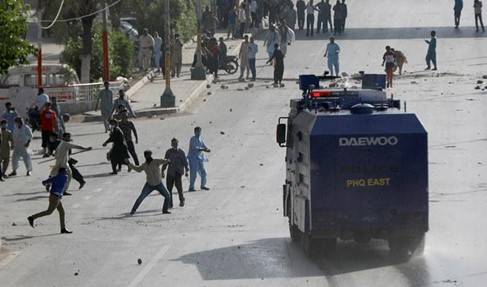
Nothing of the sort happened. So was it sheer delusion on part of Khan to believe that more than half of the armed forces would rise in his favour, then throw out the chief and place Khan back in power? Such a scenario did play out, though, in December 1971 when some military officers forced the dictator and military chief General Yahya Khan to quit and put a popular civilian politician ZA Bhutto in power. But this happened after the armed forces not only lost a war against India, but in the process, lost the country’s eastern wing as well.
The current military chief has no such stain on him. He has remained extremely guarded about his personal life and very economical with his words. His opponents have lobbed numerous accusations at him but none of them have stuck — except for the fact that he is not a great fan of Khan like three of his predecessors were.
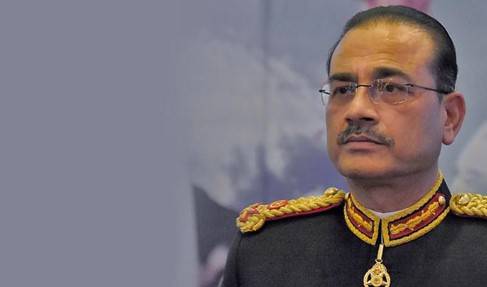
In 2014, scholar of African politics and civil-military relations Naunihal Singh wrote that ‘messaging’ (especially in this day and age) is vital for a coup to succeed. If those planning a coup are able to build a strong narrative and proliferate certain perceptions, they are likely to mitigate reactions against the coup and convincingly justify it.
But if one is to agree with the increasing number of political commentators that it was Khan who was instigating a coup (against the military chief and the current government) in 2023, then it was also he who succeeded in formulating a powerful narrative that saw him as a victim of a grand international conspiracy. His party then cleverly used social media to not only proliferate this narrative, but (during the riots), it also succeeded in shaping the perception that a ‘revolution’ was on the cards powered by the people and pro-Khan officers.
Singh uses the term ‘fog of coup’ to explain the creation of a perception which claims that the victory of the coup-makers was inevitable. But the fog needs to be thick. In 1991, fearing that Mikhail Gorbachev, the reformist Soviet leader, was planning the break-up of the Soviet Union, the ruling communist party used the Soviet military to launch a coup. But by then, opposition groups led by the ‘pro-West’ Boris Yeltsin had succeeded in creating the perception that the coup was unpopular, even within the armed forces. According to Singh, it really wasn’t, but many officers and soldiers were paralysed by the perception that it was, and suddenly aborted the coup. The military was only able to create a weak fog of coup which was effectively countered by the thicker perception of the coup’s inevitable defeat by Yeltsin.
The fog of coup created by Khan was generated by the proliferation of his narrative in which he was a victim of diabolical internal and external forces, and by the smartly circulated perception that he was overwhelmingly popular among the rank and file of the armed forces. This fog of coup was the work of his party, and most likely of several retired military officers who were on his side. But it failed to galvanise those in the military who, according to the perception, were pro-Khan and itching to clear out the military chief and bring Khan back to power. The supposed support for Khan in the military was a case of overestimation fattened by a perception. It also left his party, supporters and the media overestimating the nature of support that he enjoyed in the armed forces. Perhaps the fog of coup in this regard was thick enough, but quietly mitigated by the military leadership to keep the rank and file in line.
The tactic of triggering a coup through sympathetic officers was once popular among Islamist organisations such as the Hizbut Tahrir (HT). Till its decline from the mid-2000s onward, HT was known to recruit cadres from urban, middle-class elites (mostly white collar professionals), and infiltrate the armed forces to recruit mid-level officers. The purpose was to topple regimes in Muslim countries through military coups and then unite the countries to form a modern-day caliphate.
HT was decimated in Syria, Jordan and Egypt after facilitating coup attempts in these countries in the 1970s. In 2012, the Pakistan Army court-martialled five officers for planning a coup against the sitting government and the military’s top generals. The officers were said to be indoctrinated by HT. HT is banned in most countries, including Pakistan. In January 2024, it was banned in the UK as well which was its last safe haven. The coups were failures because they either failed to create a thick enough fog of coup or they overestimated its thickness.
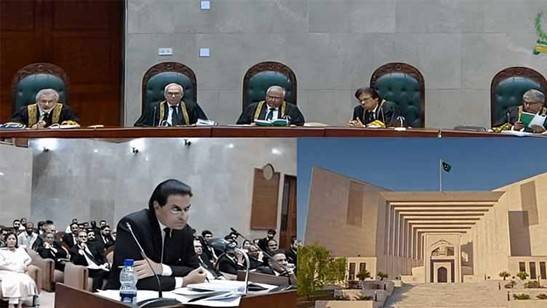
Saying that Khan enjoys the support of most judges, however, is not a case of overestimation. It seems major judges are going out of their way to exhibit this support. and thus, getting in the crosshairs of the ME. A war of narratives and messaging is raging. One perception is picturing the judiciary as ‘standing up’ to a leviathan. The other perception sees the judiciary as becoming as politicised as the ME and adopting judicial populism on the behest of a ‘dangerous’ and divisive politician.
So, if there is to be a military coup in Pakistan, it will be against the judiciary and a government which failed to neutralise it. But will it benefit Khan? No, because even though a coup will remove the sitting regime that is anti-Khan, it will make it that much easier for ME to give Khan a military trial and deliver a crippling sentence. Risky politics by Khan and by his erstwhile benefactors in the military, and large sections of the judiciary, have all reduced Pakistan from being an open anocracy to a closed one. A closed anocracy is always on the edge from where it can collapse back into authoritarianism.

